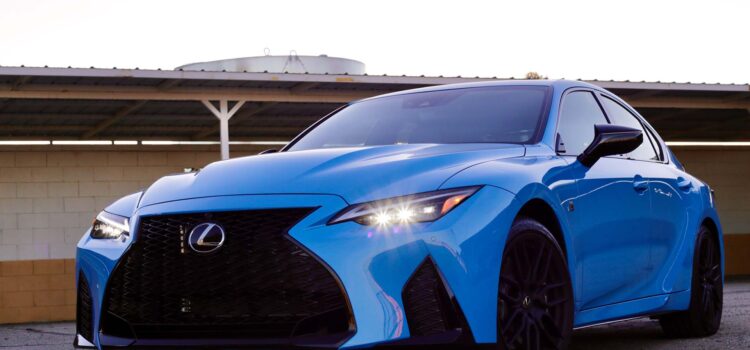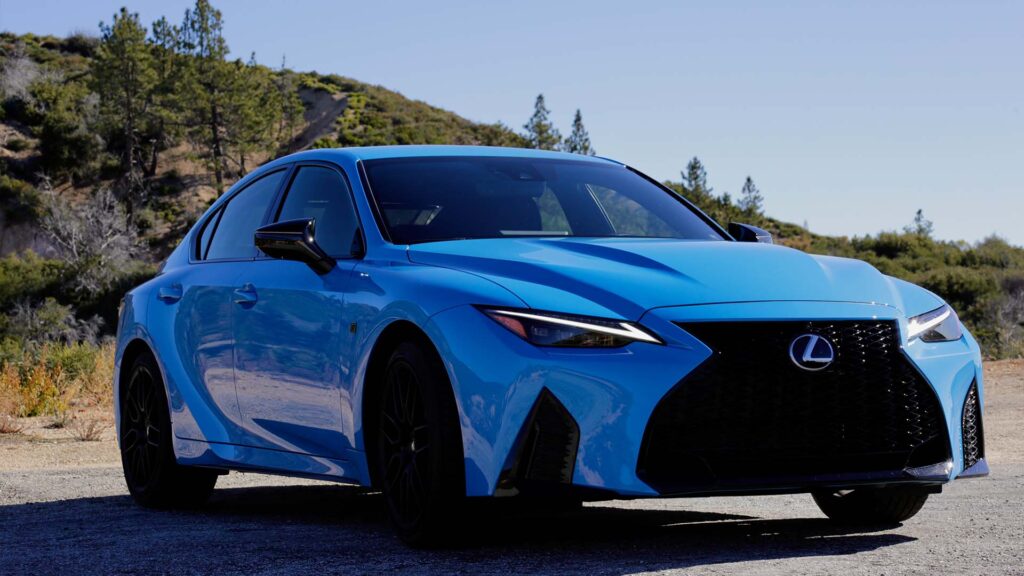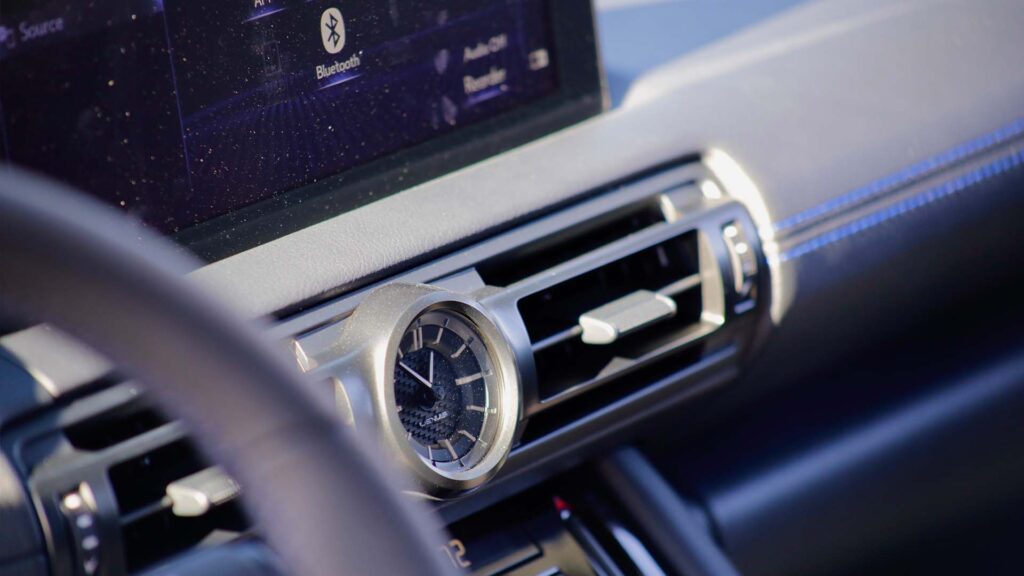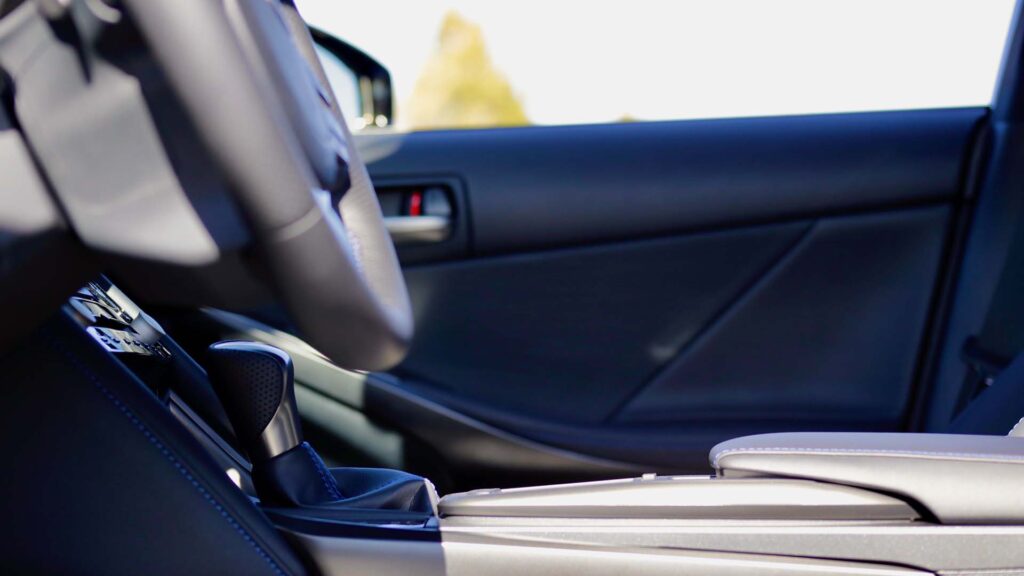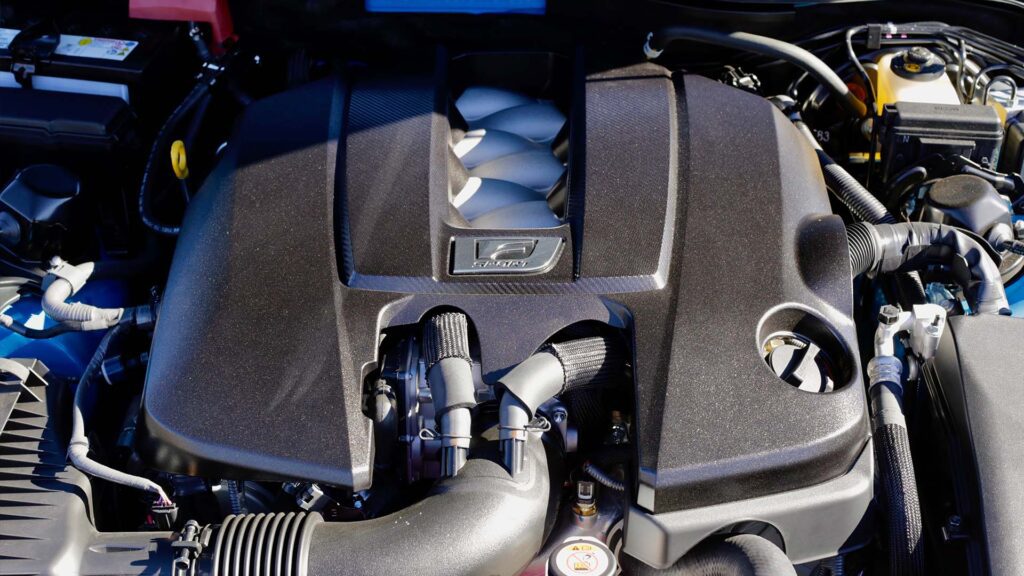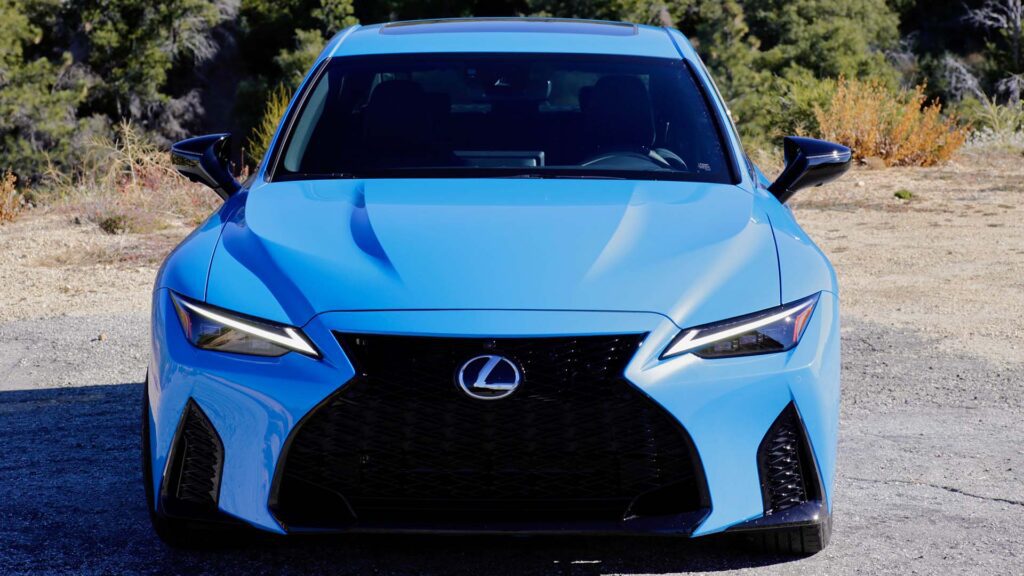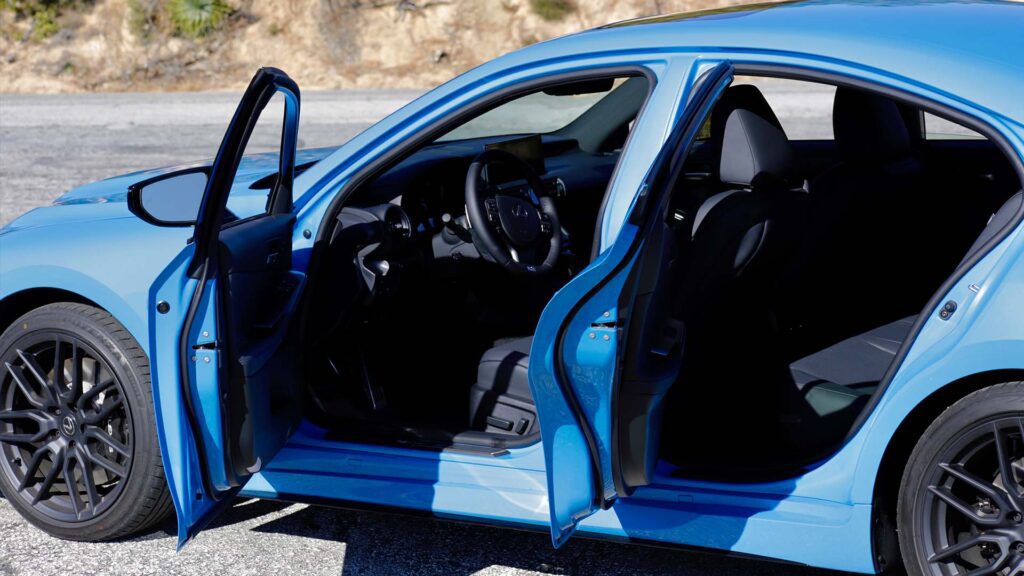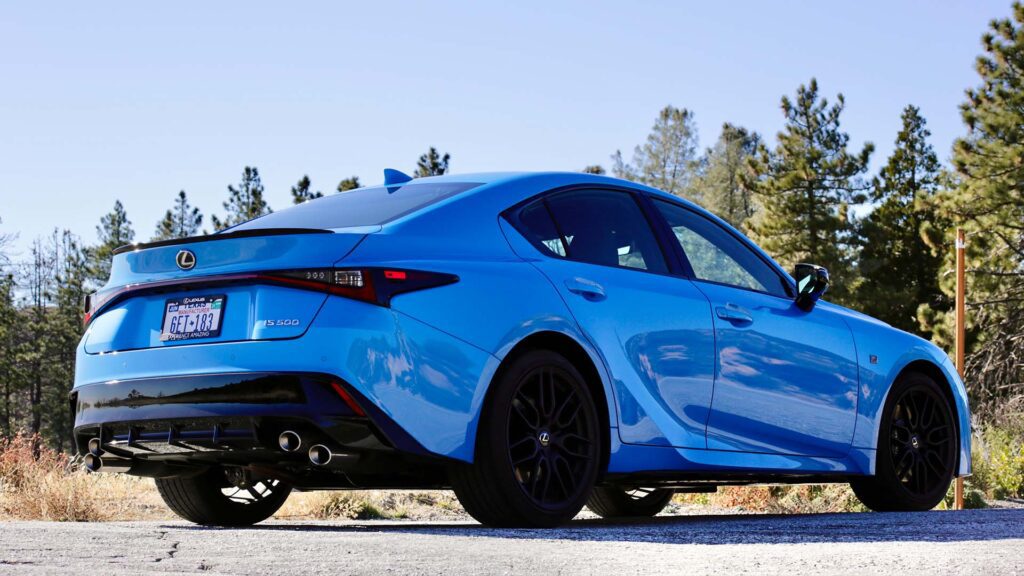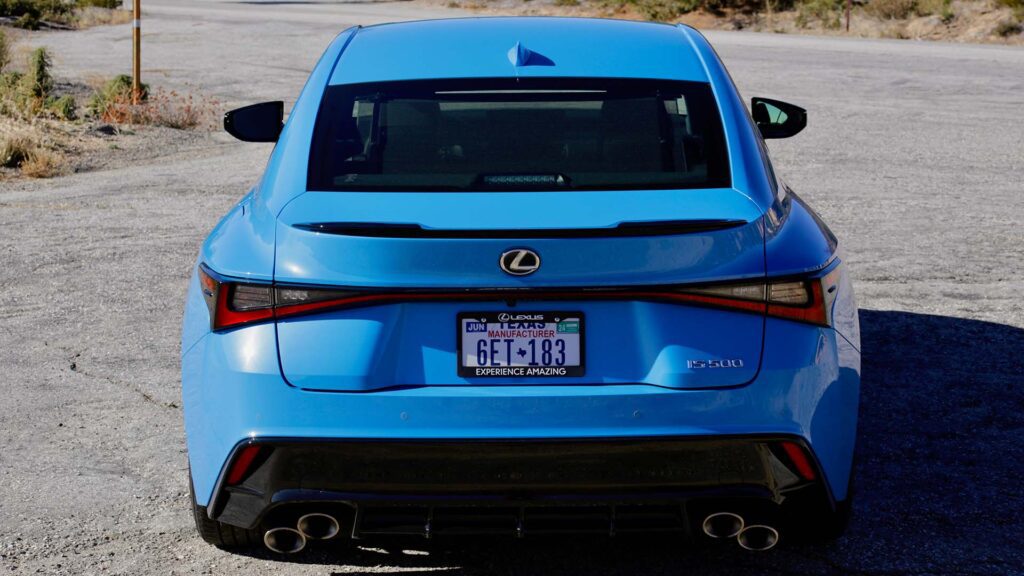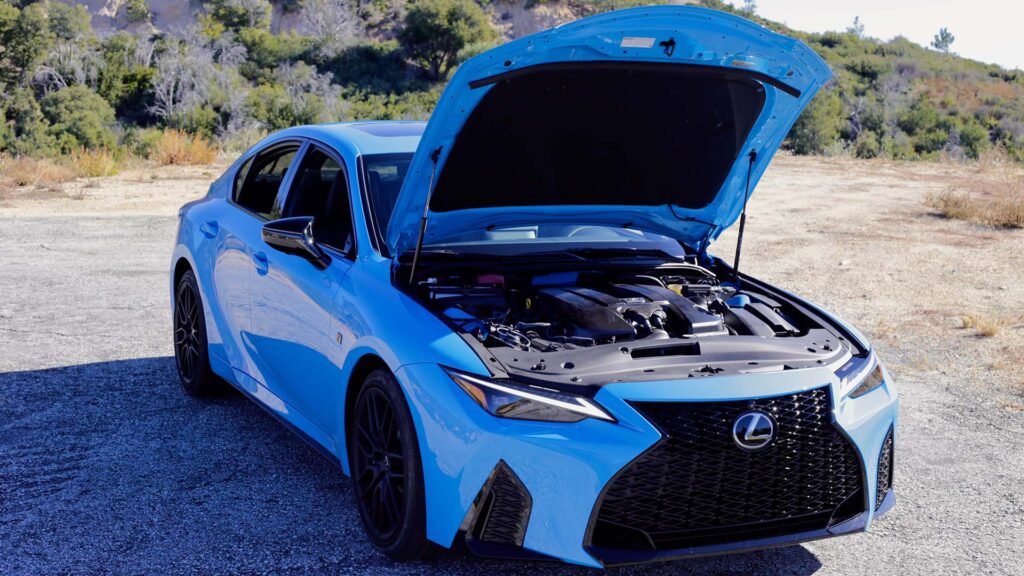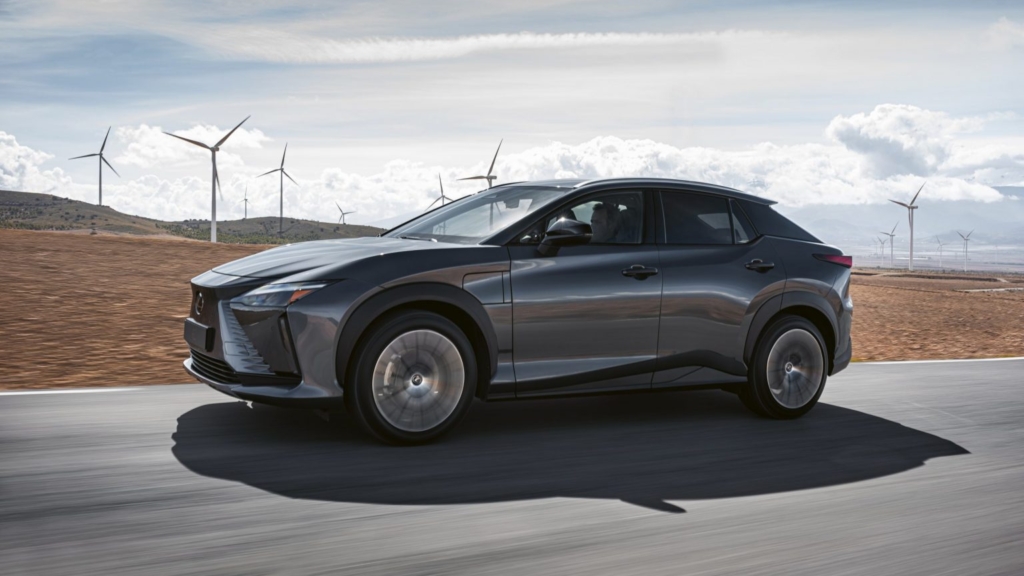2024 Lexus TX 350 review: Not your average three-row luxury SUV
Pop quiz! How many automakers debuted all-new crossovers or SUVs in the past five years? If that sounds like too long a list, let’s cut out the seemingly never-ending crop of new EVs… Now the list gets pretty short pretty fast. But fully four have come from Toyota and Lexus: the revived Land Cruiser and its GX sibling, plus the Toyota Grand Highlander and now, its luxurious Lexus TX variant.
The Grand Highlander and TX target a much different market segment than the LX and GX, though. By squeezing three rows of seats into a compact unibody chassis, the Grand Highlander I tested last year drove just like a car. And that’s the whole point: to avoid the hefty driving dynamics of a body-on-frame vehicle while also fitting adults in the back row without too much contortionism required.
Now, the TX arrives as a Grand Highlander that received a high-school rom-com makeover, with a range of powertrain options that cost enough to make the gradewalk differentiation between RX, GX, and LX at the top of the Lexus food chain a little more complex. But where the LX is a massive SUV that even non-car people will immediately notice how incredibly it drives, the RX is sporty and compact (but also ugly and annoying), and the GX caters best to an off-roading crowd, the TX ticks boxes in the middle ground for city commuters or large rural families alike.
Skip to section:
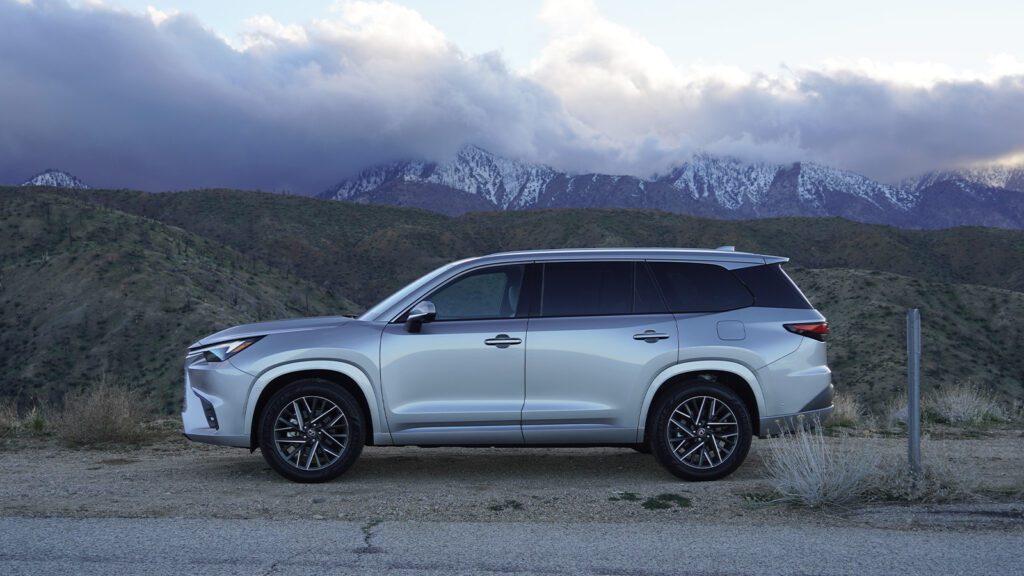
Price and specs
| Base price: | $55,050 |
| As-tested price: | $67,925 |
| Engine: | 2.4-liter turbocharged inline-four |
| Transmission: | Eight-speed automatic |
| Drivetrain: | All-wheel drive |
| Power: | 275 hp @ 6,000 rpm |
| Torque: | 317 pound-feet @ 1,700 rpm |
| Weight: | 4,730 pounds |
| 0-60 mph: | 7.8 seconds |
| ¼-mile: | 15.5 sec @ 91.2 mph |
| Tow rating: | 5,000 lbs (w/ optional equipment) |
| Top speed: | 112 mph |
| MPG: | 20 city, 26 highway, 23 combined |
| Fuel capacity: | 17.8 gallons |
Lexus TX 350 Luxury exterior design
Still recognizably related to Grand Highlanders, little differences on the TX’s exterior make a big difference in first impressions. My loaner’s Celestial Silver paint job actually ends up on the bolder end of the scale—unusual for a silver car—because the smoothed lines end up somewhat reminiscent of a Naboo royal starship from Phantom Menace. The wide grille and body-colored fender cladding end up disappearing better into darker tones, which serves the TX’s overall form somewhat better.
But generally, the TX again occupies another middle ground in terms of exterior design, carrying over some swooping Lexus styling cues of old without edging into the boxy angularity introduced on the flagship LX giant and applied entirely overboard on the new adventure-centric GX. A few concessions to contemporary competitors shine through, too, mostly in the form of metal trim above most side quarter windows and almost snake-eye headlight housings.
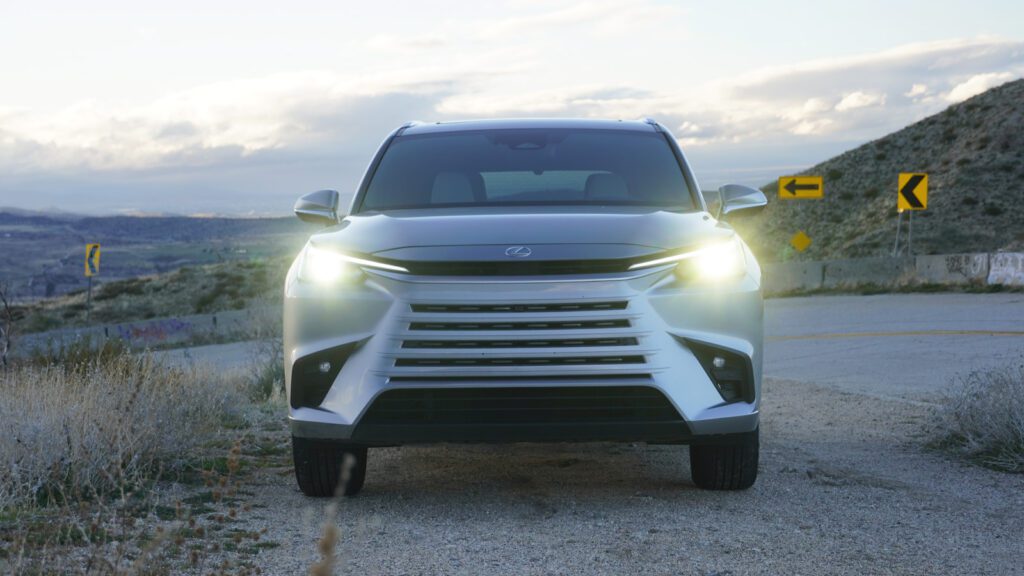
| What’s hot? | – Silent, serene ride becoming of Lexus – Smooth suspension and confident AWD handling – Premium leather and touchpoints – Snappy 14-inch touchscreen |
Lexus TX 350 Luxury pricing breakdown
A base TX starts at a competitive MSRP of $55,050, but pricing escalates quickly from there. This tester with the base 2.4-liter inline-four and Luxury trim comes out to $67,925, with the added Technology Package ($2,150), Convenience Package ($895), Mark Levinson sound system ($1,160), and second-row captain’s chairs ($680) making up the big-ticket items.
Adding $12,000-plus in options may not factor in for most buyers of the lowest-spec TX, but stepping up to other drivetrains bumps up the sticker shock even more. The TX500h with a hybrid version of the 2.4-liter engine starts at $69,350. And the top dawg TX550h+ swaps in a plug-in hybrid twin-turbo V6 engine good for 404 horsepower and 33 miles of electric range, but that starts nearly in LX territory at $78,050.
Lexus TX 350 Luxury interior and tech
After driving almost every trim level of the Grand Highlander last year, the first thing I noticed about the TX probably helps to set it apart the very most: supremely comfortable seats bedecked in supple semi-aniline leather upholstery. Adjusting the driver’s bucket with generous lumbar support and a counterintuitive combination of firm padding but opulent cushion somehow boggled my backside. And the TX arrived almost immediately after driving a new Aston Martin. Not bad, Lexus.
Meanwhile, the TX adds a couple more inches of touchscreen to reach a 14-inch diagonal measurement, with a snappy interface that looks somewhat familiar. Physical climate control dials mix with a frustrating combo of the home screen and menu pages for selecting temperatures and fan settings, but at least a little nub of a gear shifter hasn’t given way to the all-too-common dial knob.

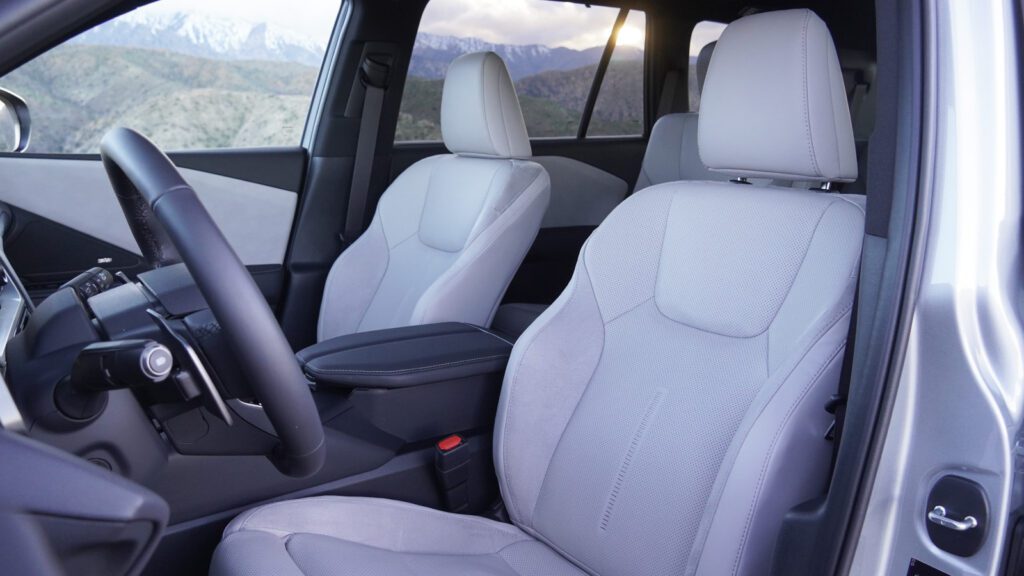


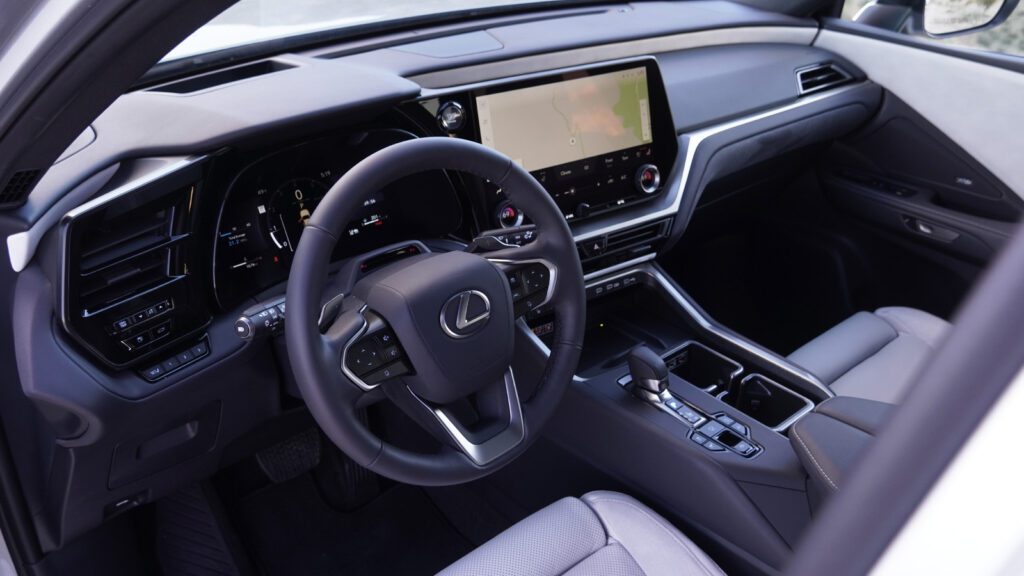

The digital gauge screen provides clear, if slightly dim, vehicle information while driving. And the Mark Levinson Surround Sound system cranks tunes up nicely, though on my own TX I might fiddle with the equalizer to boost a bit more bass to match the crisp mids and trebles.
Of course, typically overaggressive Lexus driver aids fit into the technology discussion, too. Though not as bad as the RX, the TX still dings incessantly for driver inattention—ironically pulling my eyes toward the gauge screen instead of back to the road. Lane tracing works well most of the time but gets overwhelmed by traffic or curves in the road, and startling automatic emergency braking while backing up sometimes creates the impression of a collision that didn’t actually happen.


Swaddle the whole fam in Lexus luxury
A cozy, competent urban runabout
Driving around town, the TX’s compact footprint for a three-row SUV makes navigating narrow streets, parking lots, and traffic a cinch. Despite moderately thick C and D pillars, excellent visibility also helps a ton. The stellar suspension absorbs speed bumps, potholes, and driveway entrances with the smooth substantiality expected of a luxury vehicle. To be clear, it’s not quite on the LX’s level, but Lexus clearly made suspension a priority while working over the Grand Highlander chassis.
Sound deadening also helps to create a serene cabin, which drone from the petite turbo-four only occasionally intrudes upon. The ride quality and insulation only get better at highway speeds. Hitting 90 miles an hour almost happens too easily since so little wind and tire noise enters the cabin. Head into a stiff breeze or up a steep hill, though, and the engine noise once again crops up.
The TX 350’s mill produces plenty of torque at 317 pound-feet, and the eight-speed auto shifts quickly without lurching, but the engine’s soundtrack reveals the force necessary to haul around 4,730 pounds of curb weight. A bit more exhaust burble would go a long way toward matching the confident ride quality while bolstering the physical impression of real-world performance, even if a 0-60 time of just under eight seconds seems a bit underwhelming on paper.


Driving out of Los Angeles toward the Mojave Desert early in the morning, I turned on the adaptive cruise as an experiment to compare to the exasperating RX. On the TX, Lexus’ intrusive driver aids perform better, if only slightly. As on the Grand Highlander, adjusting the adaptive cruise control speed and following distance requires using unlabeled buttons on the steering wheel that reveal their purpose strictly on the head-up display.
The Lexus RX I drove also dinged constantly, citing driver inattention any time I wore sunglasses, but I can happily report the TX can handle shades without a similar problem. But similarly enthusiastic automatic emergency braking frequently left me looking around to see what I backed into to cause such a sharp stop.
The TX 350 also marked my first time ever trying an autonomous parking function in any car. Perhaps we can blame the first attempt on driver error, as I pulled up slightly in front of the wide open spot as if to parallel park normally. Pushing the button then prompted the TX to back in perpendicular to the curb. I tapped the brake pedal and reset directly next to the open spot, and with three back-and-forths, the TX parallel parked itself… 30 inches from said curb. I then corrected it with another back-and-forth adjustment. It’s not terrible, and it’s kind of fun to just let Lexus take the wheel, but I’d be curious to try in a tighter situation with a car that I don’t have to give back a few days later.




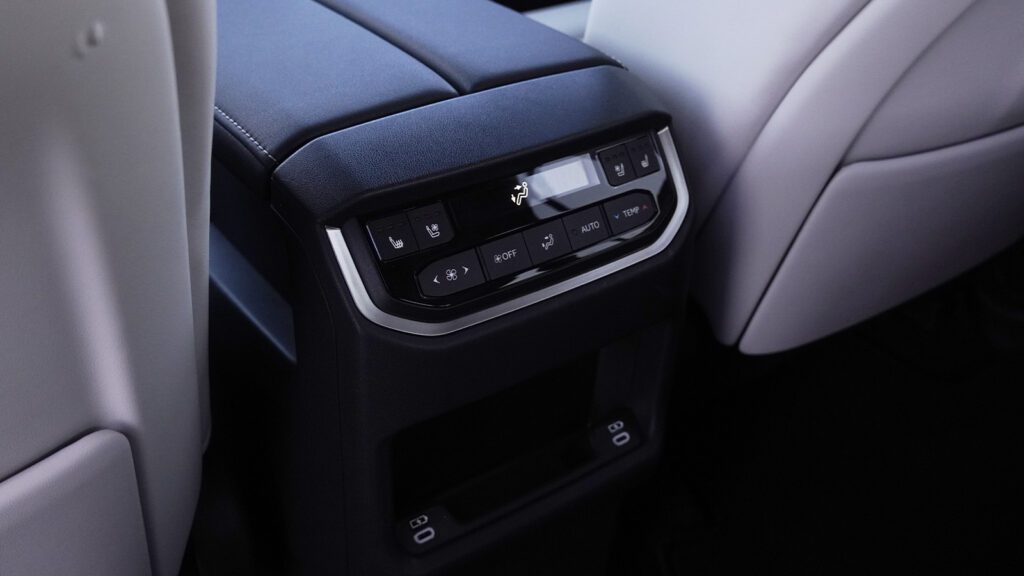






A road tripper for the more dynamic family
From the Mojave Desert, I then took a quick rip up the back roads toward Wrightwood, California. Dark clouds up the hill looked threateningly close to snow, and though the TX handled every mountain corner of clean asphalt without breaking a sweat, those eco-friendly Goodyear Assurance tires seemed unlikely to handle any real slip-and-slide particularly well. As I hauled through corners, thick sway bars, and sublime dampers preventing much in the way of body lean, I also played with the paddle shifters to keep the 2.4-liter mill in its happy place. But as great as paddles are, modern turbocharger wastegates make torque curves flat enough that revving to the moon becomes unnecessary.
Still, the sheer pace I managed in a TX on eco tires surprised me. Both the Toyota and the Lexus versions provide real passenger car performance with full-size interior volume, as I learned when I pulled over to shoot some pics and folded down the rear seats. With the third row of seats up, my little duffle fit just fine, but tapping a button to fold them down opened up a cavernous cargo compartment. Then, I flipped a few levers on the second-row buckets to tilt them down, as well.
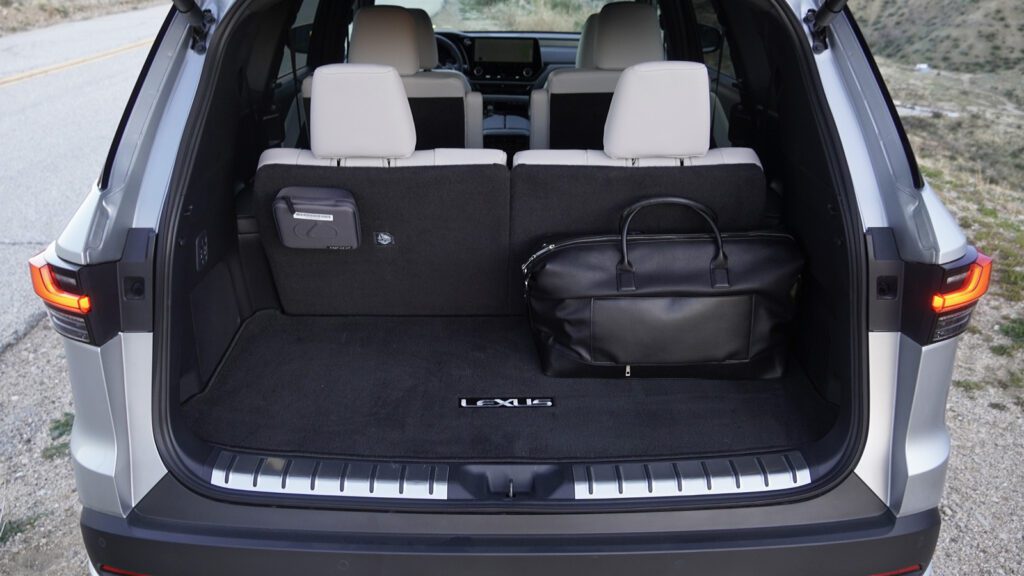

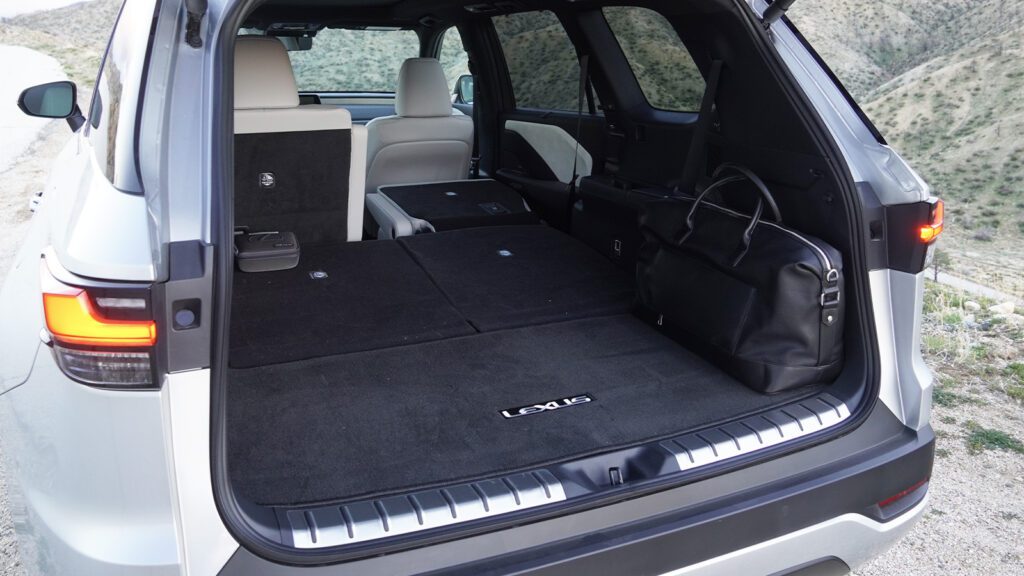

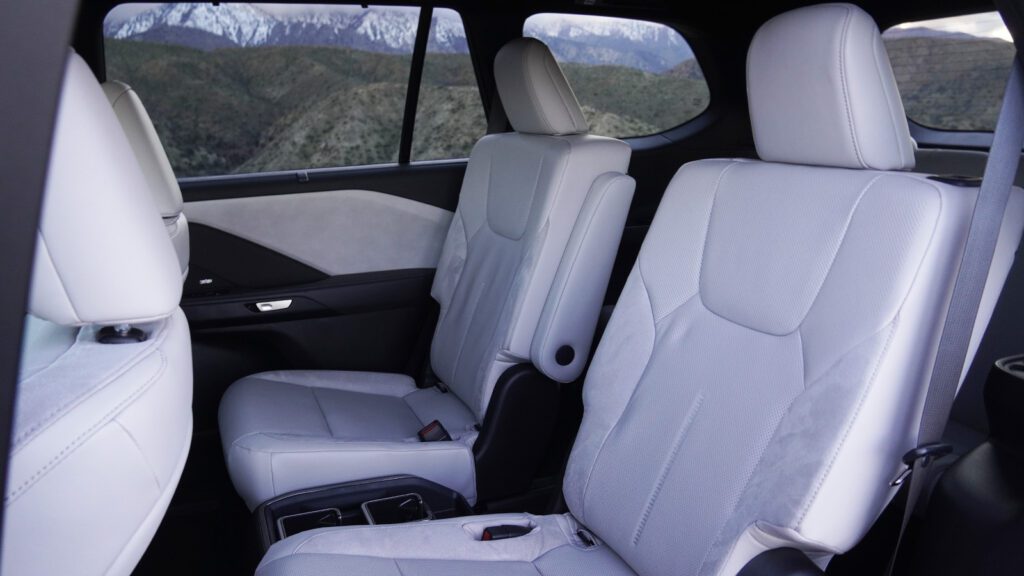



With everything folded, Lexus claims the TX can hold 97 cubic feet of cargo. More importantly, from my perspective, the rear now looked plenty large enough to carry bikes or skis (the largest objects I tend to schlep around). I even feel optimistic about testing that all-wheel-drive system in the snow and dirt with more legit tires.
The TX also earns up to a 5,000-pound tow rating, so a trailer hitch bike rack might fit into the mix quite well, too. Fixed roof rails ready for crossbars mean that a roof box, necessary when traveling with seven or eight passengers and luggage, can be mounted with ease. But in fairness to the entire goal of the Grand Highlander and TX alike, for most trips, the interior should do just fine.


| What’s not? | – Base 2.4L engine comes up lacking – Typical Lexus intrusive driver aids – Frustrating climate controls – Hybrid options add up quickly |
Goldilock’s Lexus crossover?
Headed back down the hill towards LA, I pondered all the various ways that a TX with each powertrain could fit into the expanding Toyota and Lexus lineup. Comfortable and capable, with enough space for a large family or friend group, smooth and easy to drive, all within a luxurious passenger compartment—the TX isn’t too much bigger than an RX from the outside but much more spacious on the inside. And it’s so much smaller than the other Lexus three-rows, the GX and LX, that the efficient layout almost reminds me of EV packaging. An impressive achievement, to say the least.
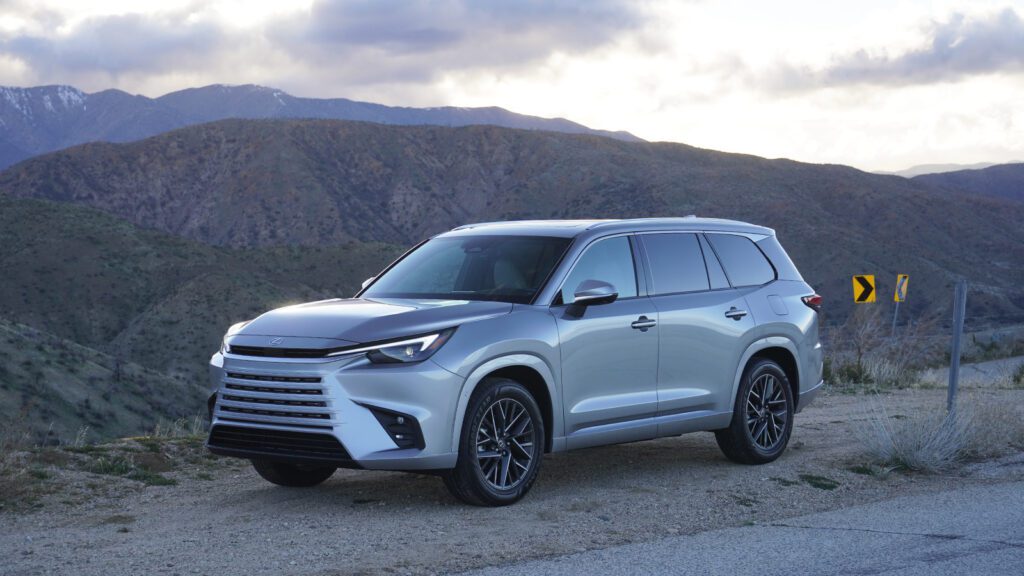

The powertrain options and concomitant pricing hikes combine to make the TX unique. Want to spend LX money on a powerful plug-in hybrid? Go buy a TX550h+. How about finding a truly luxurious ride without feeling ripped off? Yep, the base TX will do, even though all cars are terribly expensive these days. But I suspect the mid-level 2.4-liter hybrid takes the cake, able to merge easily between comfort in the city and longer road trips with the fam. Maybe even a bit of sportiness enters the equation, too, which the base TX 350 Luxury proved possible over a week’s worth of driving.


